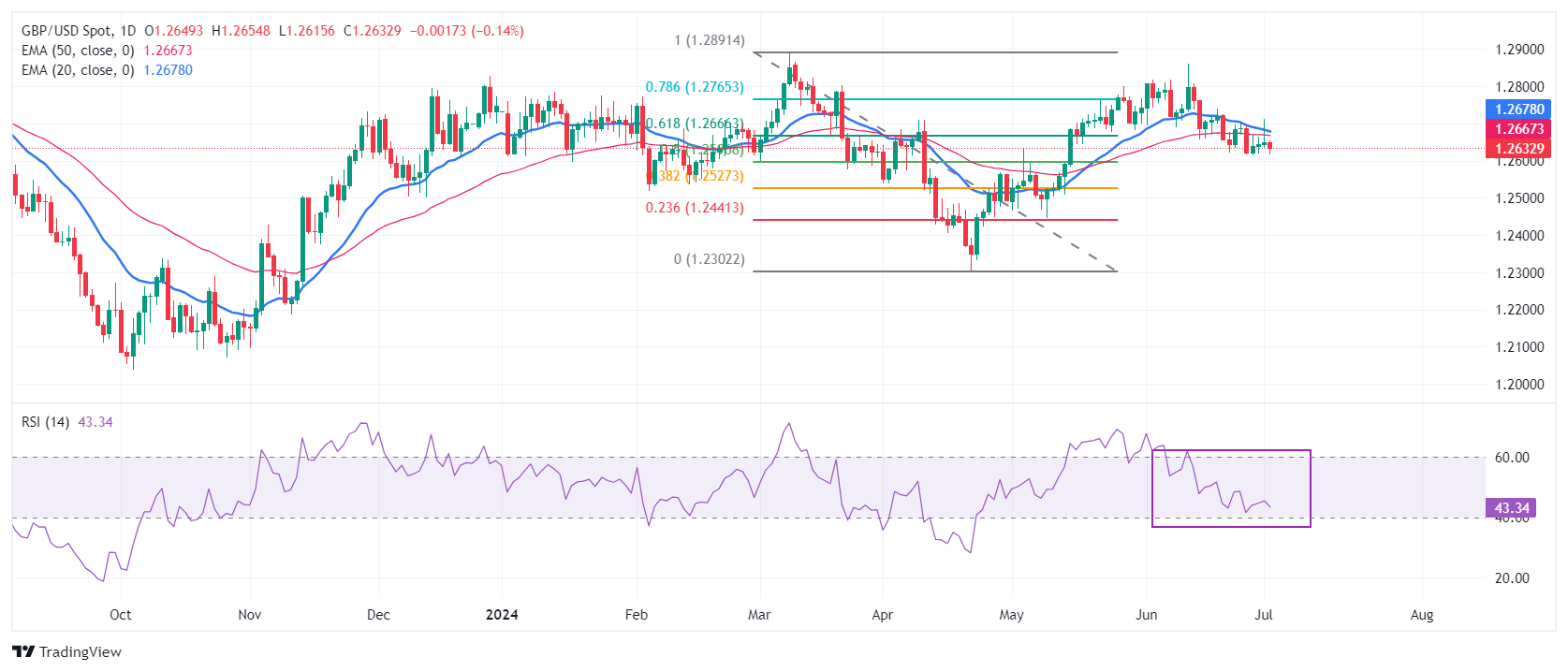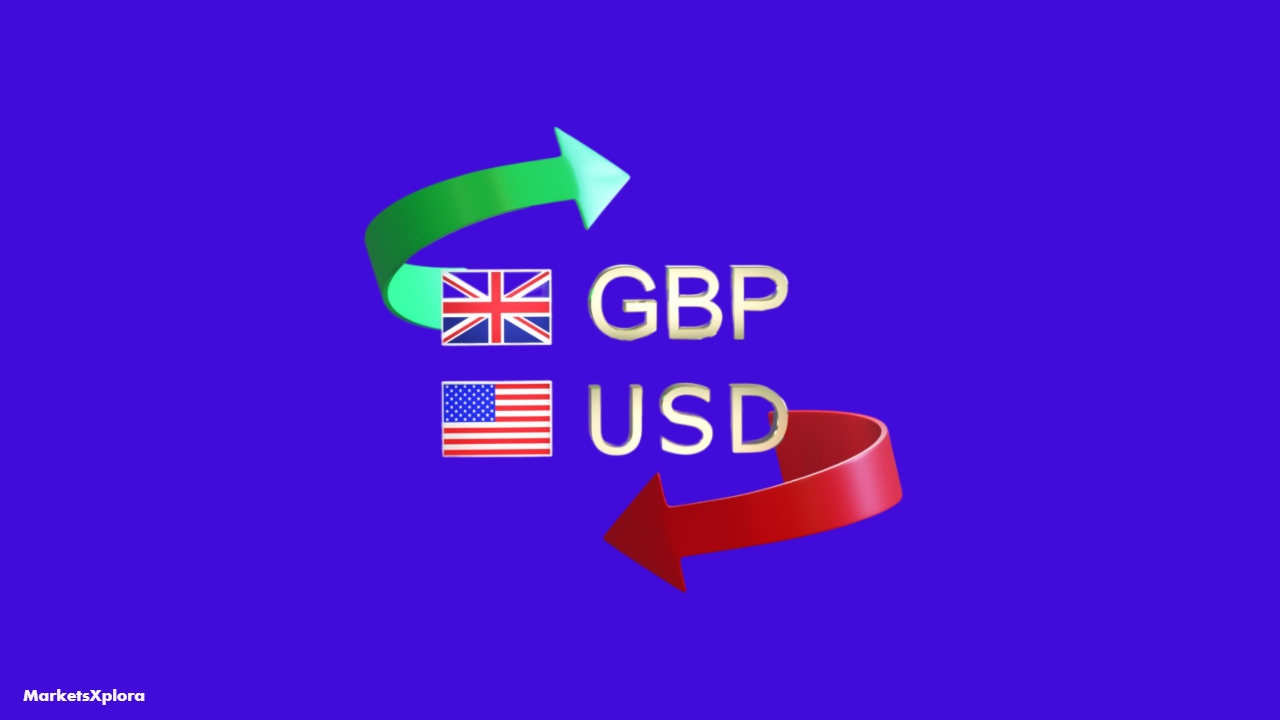Key Insights
- GBP/USD has retreated below the 61.8% Fibonacci retracement level at 1.2667 and both the 20-day and 50-day EMAs, indicating a bearish short-term outlook.
- The pair is currently testing support around the psychological 1.2600 level, with a break below potentially targeting 1.2500.
- The 14-day RSI oscillating between 40-60 suggests market indecision, with a move above 1.2666 needed to neutralize immediate bearish pressure.
GBPUSD Fundamental Outlook
The Pound Sterling (GBP) is experiencing a pullback against the US Dollar (USD) in Tuesday’s London session, with the GBP/USD pair retracing to around 1.2620. This retreat comes as market sentiment turns risk-averse ahead of two crucial events: Federal Reserve Chair Jerome Powell’s speech scheduled for 13:30 GMT and the upcoming US Nonfarm Payrolls (NFP) data for June, due on Friday.
Investors are keenly awaiting Powell’s comments for any hints about the Fed’s plans to begin lowering interest rates. While June’s policy meeting saw Powell acknowledge encouraging signs in inflation softening, the Fed remains cautious, seeking sustained evidence of inflation returning to the 2% target before considering rate cuts. Current Fed projections indicate only one rate cut this year, reflecting a conservative stance.
The focus this week will be on labor demand and wage growth data, which could influence expectations about potential rate cuts starting from September. The US JOLTS Job Openings data for May, expected at 14:00 GMT, will be closely watched, with economists anticipating a slight decrease to 7.90 million from April’s 8.06 million.
Despite the current pullback, the Pound has shown resilience against its European and Asian counterparts, even as easing UK price pressures fuel expectations of earlier rate cuts by the Bank of England (BoE). The British Retail Consortium reported a significant slowdown in annual shop price inflation to 0.2% in June, the lowest since October 2021. Food inflation has also declined for 14 consecutive months, while non-food items saw a year-on-year price decrease.
It’s worth noting that while headline inflation in the UK has returned to the BoE’s 2% target, policymakers remain concerned about high inflation in the service sector. The BoE views service inflation as a key indicator of underlying price pressures and seeks significant moderation before considering a shift towards policy normalization.
In the manufacturing sector, revised estimates show modest expansion in June, with the S&P Global/CIPS Manufacturing PMI at 50.9, slightly above the expansion/contraction threshold of 50.0.
Read also! Best Time to Trade GBPUSD
GBPUSD Technical Analysis

GBP/USD is showing signs of weakness after failing to sustain a move towards the 1.2700 round-level resistance. The pair has retreated below the crucial 61.8% Fibonacci retracement level at 1.2667, drawn from the March 8 high of 1.2900 to the April 22 low at 1.2300.
The near-term outlook appears bearish as the Cable has slipped below both the 20-day and 50-day Exponential Moving Averages (EMAs), positioned at 1.2675 and 1.2666 respectively. This breakdown below key moving averages suggests that sellers are gaining control in the short term.
The 14-day Relative Strength Index (RSI) is oscillating in the 40.00-60.00 range, indicating a lack of clear directional momentum and reflecting the current indecision among market participants. This neutral RSI reading aligns with the pair’s recent consolidation and could suggest further choppy trading in the near term.
Support for GBP/USD is currently being tested around the psychologically important 1.2600 level. A decisive break below this support could open the door for further downside, potentially targeting the next significant support zone around 1.2500.
On the upside, the pair needs to reclaim ground above the 50-day EMA at 1.2666 to neutralize the immediate bearish pressure. A move above this level could see the pair challenge the recent high near 1.2700, with a break above potentially signaling a shift in the short-term trend.


